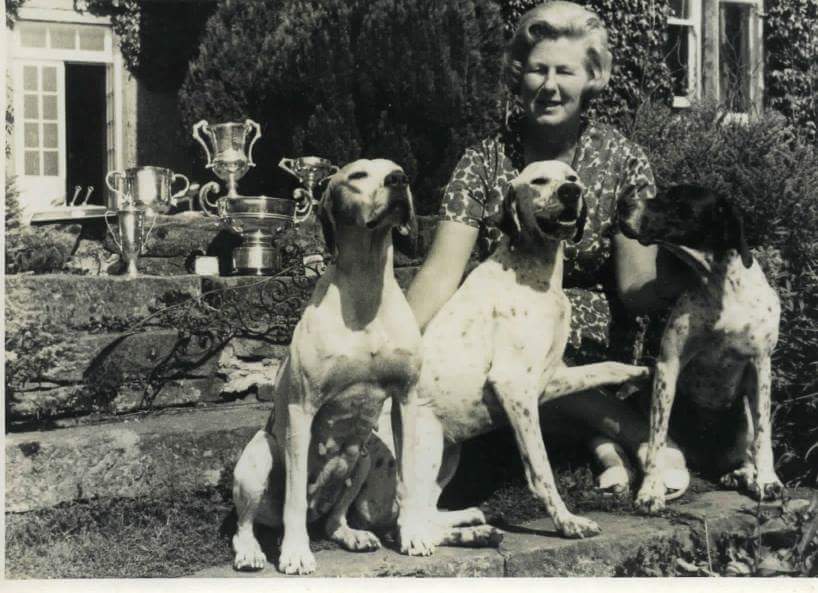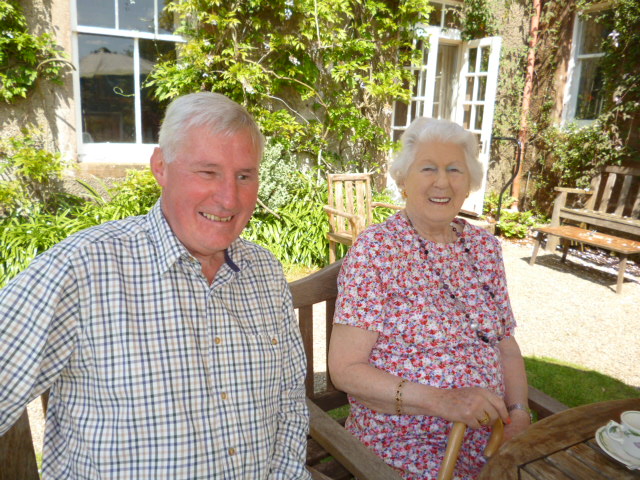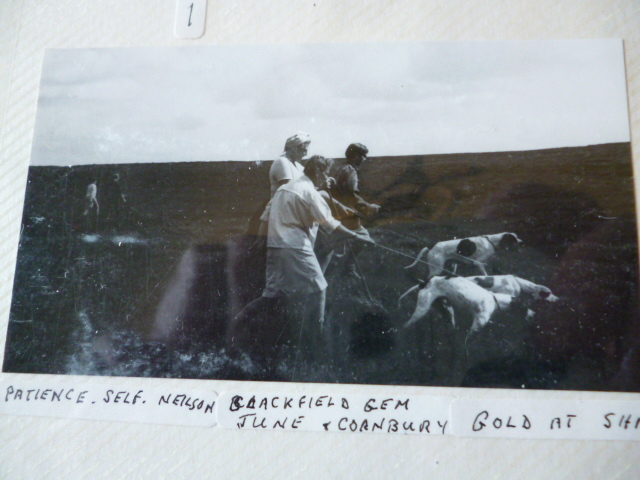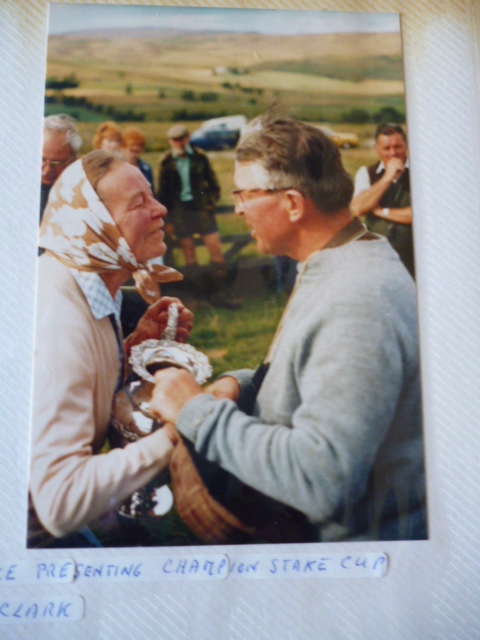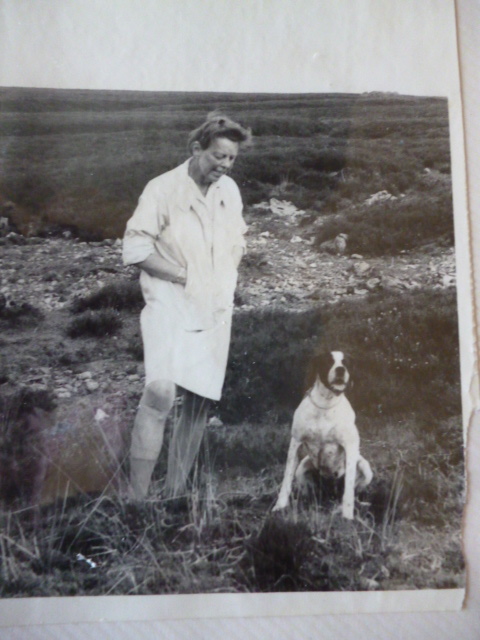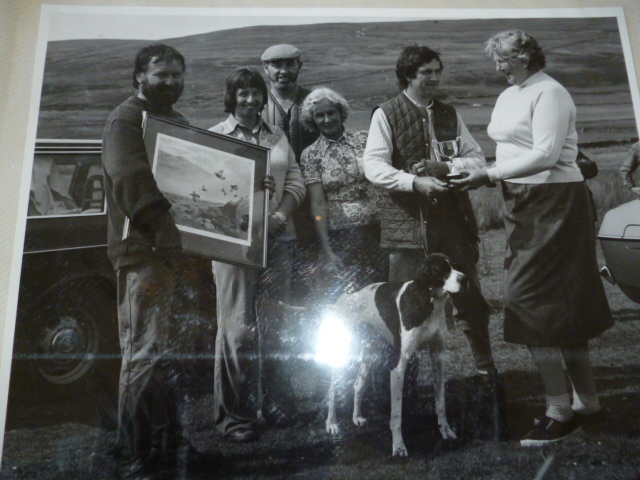'Down Memory Lane' looks back on some of the significant people in Pointers and Setters and significant events in the Pointer world.
The story behind Heywood-Lonsdale
By Frank-Tommy Olsen
Henry Heywood-Lonsdale was the first person in history to continue his father's success at field trials. Their Ightfield breeding became the longest continuously running pointer & setter kennel of its day.
Henry Heywood-Lonsdale was born in Brewood, Staffordshire in January 1864. His mother was from Liverpool, Lancashire while the families of his father Arthur Pemberton Lonsdale came from Wakefield, Yorkshire where he had been born in January 1835. Arthur had been educated at Eton and Oxford and was also known as a top rower at Oxford. In 1877 he was given a Royal Licence to change his name to Heywood-Lonsdale in order to inherit a fortune from his maternal uncle John Pemberton Heywood, a Liverpool banker. Arthur received £1.25 million of Heywood's £1.9 million estate. In 1885 Arthur Pemberton Heywood-Lonsdale bought the Shavington Estate in Shropshire. In 1888 he was the High Sheriff of Shropshire.
A.P. Heywood-Lonsdale studied law at the prestigious Lincoln's Inn in London and was called to the bar as a barrister in 1862. The following year he was married, officiated by his uncle the Bishop of Lichfield, with the arrival of his three children soon thereafter. His earliest recorded field trial involvement with English setters was in 1867. In June 1869 he bred from his female Bet (Rap - Belle II) who he had acquired from a Mr Steer at Halewood, Lancashire. She was without Laverack breeding. He brought her to Barclay Field's Duke 1361 (Duke - Slut), the dog that would have a huge impact on Llewellin's breeding from a litter bred by Thomas Statter's Rhoebe that same year. Several fairly significant pups came in A.P. Heywood-Lonsdale's litter, most importantly for him were his Duchess and Drake. The latter was placed at field trials in 1871 and 1872, while Duchess was bred to Barclay Field's Bruce (from Statter's litter between Laverack's Dash II and Rhoebe). He also brought Spree (Stalker - Romp) to Bruce, another female he had acquired from Mr Steer. Laverack's Dash II, also known as "Old Blue Dash", was regarded as one of the greatest pillars in setter breeding but his son Bruce was by many regarded as a disappointment. A.P Heywood-Lonsdale must have had a similar experience as some of the offspring did well in trials but they did not leave a legacy as breeders.
While the immediate success in trials gradually saw a slight setback with Heywood-Lonsdale's further breeding of his setters, it coincided with the Ightfield pointers coming through to make a name for themselves. This was greatly due to the employment of William Brailsford as manager of his kennels. Brailsford had in 1866 founded the National Field Trials and was previously the keeper for the Duke of Westminister and for Lord Lichfield at Shugborough Hall. Most of the pointer material also came from Thomas Statter at Stand Hall, near the market town of Bury. He had acquired them from Lord Derby, for whom he and his father for years had acted as land agents.
A.P. Heywood-Lonsdale managed to get his setter material up and running again through his connections with Henry Anson Cavendish, better known as Lord Waterpark. He was a keen sportsman who had hunted and fished in several British colonies around the world. In 1869 he had hunted buffalo with among others George Armstrong Custer, who only a few months earlier had fought the indians in the Battle of Washita River (and would later die in the famous Battle of the Little Bighorn). It was immediately after that trip that Lord Waterpark acquired the female Rival (Rake - Spree), bred by Heywood-Lonsdale. He later took her daughter Rue (by Heywood-Lonsdale's Drake) to T.B. Bower's Laverack Fred V. From this A.P. Heywood-Lonsdale got his Baron Doveridge who became quite a significant stud. Most importantly for himself were the siblings Woodhill Bruce & Beta.
With another relative A.P. Heywood-Lonsdale made substantial investments in British Columbia, Canada. Several places in North Vancouver have been named after him. The strong field trial scene in America also became of great interest and he went ahead and imported several dogs from the United States.
In the autumn of 1890 William Brailsford and Angus Cameron were sent over to America with a handful of pointers and setters, to be tested at field trial competitions there. Some of the dogs remained there and some returned to England. From early November to December they trialed dogs from Ontario, Canada to North Carolina. At Ontario they were joined by Thomas Johnson who had travelled down from Manitoba. He purchased pointers Ightfield Upton (Ightfield Dick - Polly Peach-um) and Ightfield Blithe (Dancer - Ightfield Bloom). A few years later he would sell them on to Charles W. Stoddard's kennels at Dayton, Ohio.
At the Inaugural Derby at Chatham, Ontario Mr Johnson placed fourth with Upton, while Angus Cameron won with the half-brother Tyke (Ightfield Dick - Perdita) and placed third with ES Ightfield Phoeness (Woodhill Bruce - Lucy). At the All-Age stake William Brailsford cleaned up by taking 1st, 2nd and 4th with P Ightfield Dick (Dick III - Bell of Bow) winning the American Field Cup ahead of ES Ightfield Rosa (Ross - Pitti Sing), Thomas Johnson in 3rd with P Ightfield Blithe and Brailsford with P Ightfield Deuce (Wynnstay - Dainty).
At the Central Field Trial Club's trials at Lexington, North Carolina they recorded a noticeable win when Angus Cameron handled ES Ightfield Ian (Woodhill Bruce - Lucy) to victory in the Setter Derby, ahead of two legendary American handlers; J.M. Avent with Rupert (Roderigo - Bo-Peep) and W.W. Titus with Sam R (Dash B - Daisy Hope). Meanwhile William Brailsford won the All-Age Pointer Stake with Ightfield Deuce, but Deuce lost the final battle for the Absolute Winner against ES Prince Lucifer (King Noble - Elsie Belton). (King Noble was a son of the famous Llewellin import to America; Count Noble.)
P Ightfield Dick came home from America in 1891 and straight away sired a litter with Ightfield Clio which produced the important sire Ightfield Orpheus, found in some of the Pitchford lines. The following year Dick sired Watkin Wynn's Don O'Gymru. Both he and Orpheus were later found behind famous dogs like Governor Moscow and Lonsdale's great stud His Majesty. His Majesty was sired by Isaac Sharpe's triple Champion Stake winner Stylish Touchstone (1921-22-23). Ightfield Dick also sired Woolton Dick who in turn sired George Pilkington's field trial champion Woolton Druid. H.H. Heywood-Lonsdale got another pointer sire in Ightfield Druid (Woolton Druid - Bertha of Drayton).
In 1895 A.P. Heywood-Lonsdale's ESB South Durham Daisy (Prince W - Lookout) won the UK Champion Stake. The following year Daisy was 1st equal in the English Setter Club All-Aged Stake with Ightfield Roma (Fred W - Ightfield Rosa). Fred W was a half-brother of Daisy as he also was sired by Prince W. A sister of Roma, Wild Freda, was sold to August Richard in Belgium where she did well in trials and as a brood bitch. For a few years they also had another well-known Fred W son called Sybarite Sam, doing well in trials and at stud.
By now Arthur's son Henry had taken over the breeding of the dogs. He had a number of strong setters and pointers to focus on, so many that several of the dogs anmassed by his father were selected to be sold off at the Aldridge's auctions.
Arthur Pemberton Heywood-Lonsdale passed away in February 1897 and later that year sixtytwo of his dogs were sold at the Aldridge's location in London, now better known as Covent Garden. Only a few years earlier Thomas Statter's kennels had been dispersed at the same venue and a few years before that also what was left of Thomas Pilkington's kennels, from pups to old dogs. Just as A.P. Heywood-Lonsdale had been active with field trial dogs for 30 years (1867 - 1897) H.H. Heywood-Lonsdale would take it for another 30 years from there.
Captain H.H. Heywood-Lonsdale was never one to rest on his father's laurels and as one observer eloquently put it at the time, he kept proving the Ightfield strain to be staunch and true. He also continued the important collaboration his father had with Colonel C.J. Cotes and his Pitchford kennels.
In 1899 he mated the above mentioned Ightfield Roma with Ightfield Gaffer (Ightfield Gaick - Fan). From this came Ightfield Gallus, sold to Herbert Mitchell who renamed him Lingfield Gallus. He contributed greatly to Mitchell's new kennel and sired several important offspring before first being sold to Belgium, producing more good offspring, and eventually ending up with Sverre Udnæs in Norway.
1899 was a good year that also saw the births of other important dogs like Ightfield Duke (Ightfield Tom - Duchess) and Ightfield Gaby (Ightfield Gaffer - Ightfield Slut). The Ightfield dogs entered the new century having some of the most valuable breeding stock to be found. For the next three decades some pointers and every single setter winning the Champion Stake had Ightfield dogs in the nearest generations.
H.H. Heywood-Lonsdale strengthened his setter lines even further by importing a pup from USA, one that turned out to be one of the great ones. The breeder was an Englishman called Herbert S. Bevan, originally from Hampshire, who had settled in Somerville, Tennessee. In 1903 Bevan bred his Baffle Wind'em (Robert Count Gladstone - Dolly Varden) with Sure Shot (Lady's Count Gladstone - Jessie Rodfield), line breeding on Hall of Famers Lady's Count Gladstone and his sire Count Gladstone IV, famously handled by J.M.Avent. From this litter Heywood-Lonsdale imported a pup called Bondhu Wind'em, who he renamed Ightfield Rob Roy.
Rob Roy's sister Nora Wind'em was sold to Hobart Ames, the Massachusetts industrialist, whom two years earlier had acquired the cotton plantation near Grand Junction, Tennessee (only 20 miles from Bevan's place). Ames made it into the hunting preserve and livestock operation that became the venue of the National Championship.
Shortly before Rob Roy's arrival in the UK, Heywood-Lonsdale had also taken a pup from C.J. Cotes that he named Ightfield Duffer (Ightfield Gaby - Pitchford Daisy). He won the Acton Reynolds Stake in 1904 and the English Setter Club Challenge Cup in 1905. Unfortunately he died later that year and only sired one litter.
Ightfield Glow, born in April 1911, was exported to Norway where she produced several very important offspring. Most significantly Storfosen Fly, the mother of the legendary Storfosen Cry, who is found behind all the Scandinavian lines. Glow was by Pitchford Gough (Ightfield Gaby - Pitchford Duchess) - Ightfield Revel (Ightfield Rob-Roy - Ightfield Darling).
In the early 1920s, the now titled Lt. Colonel H.H. Heywood-Lonsdale still had success with the setters. First Ightfield Rogue (Ightfield Rufus - Ightfield Maggie) and then Ightfield Prudence (Pride of Gibraltar T - Lonely). She was a strong mix from several imports from the USA and with a lot of Ightfield and South Durham on the dam's side. Prudence went on to win the 1921 Kennel Club Derby. In 1922 this was followed up with Ightfield Rustle (Ightifeld Rogue - Sybil of Down) defending the derby title for Heywood-Lonsdale. In 1923 Jack Frost was runner-up in the derby with Rhinefield Flight (Ightfield Sheldrake - Ightfield Prudence) and won the 1924 English Setter Club Challenge Cup. Her litter brother Rhinefield Gambler was awarded a merit at the same trial and had several other wins before he was sold to Italy. Before his departure, Gambler sired some litters in England and produced Herbert Mitchell's Lingfield Idris, winner of the 1925 UK Champion Stake.
Idris was the first recipient of the beautiful new main trophy awarded to the Champion Stake winner; The Heywood-Lonsdale Perpetual Challenge Trophy. The inscription reads "Presented by Lieut. Colonel H. Heywood-Lonsdale to the National Pointer and Setter Society 1925." That society ceased to exist in 1938. From that time the Scottish Field Trials Association and the International Gundog League took over the running of the championship in alternating years.
Later in the 1920s the Ightfield kennels, like so many others at the time, was decimated by distemper. From 1927 Henry Heywood Heywood-Lonsdale was no longer active with the dogs. He passed away on 1 Nov 1930 in Marylebone, London. None of his children continued the field sports and dog work into the next generation. His sons followed in his footsteps with distinguished military careers. Edward was a Commander in the Royal Navy. He had a young Philip Mountbatten, later to be known as Prince Philip the Duke of Edinburgh, as a junior officer on the destroyer HMS Wallace and the frigate HMS Magpie. The latter ship was later also commanded by Prince Philip. When Commander Edward Heywood-Lonsdale's daughter Amanda married Peregrine Cavendish, Duke of Devonshire in 1967, Her Majesty Queen Elisabeth II was in attendance. The wedding was at St Martin-in-the-Fields church at the corner of Trafalgar Square, only 400m down St Martin's Lane where her great-grandfather A.P. Heywood-Lonsdale's dogs were sold at Aldridge's exactly 70 years earlier.
Austria Feature
Magnificent Minerva
Bettie Town
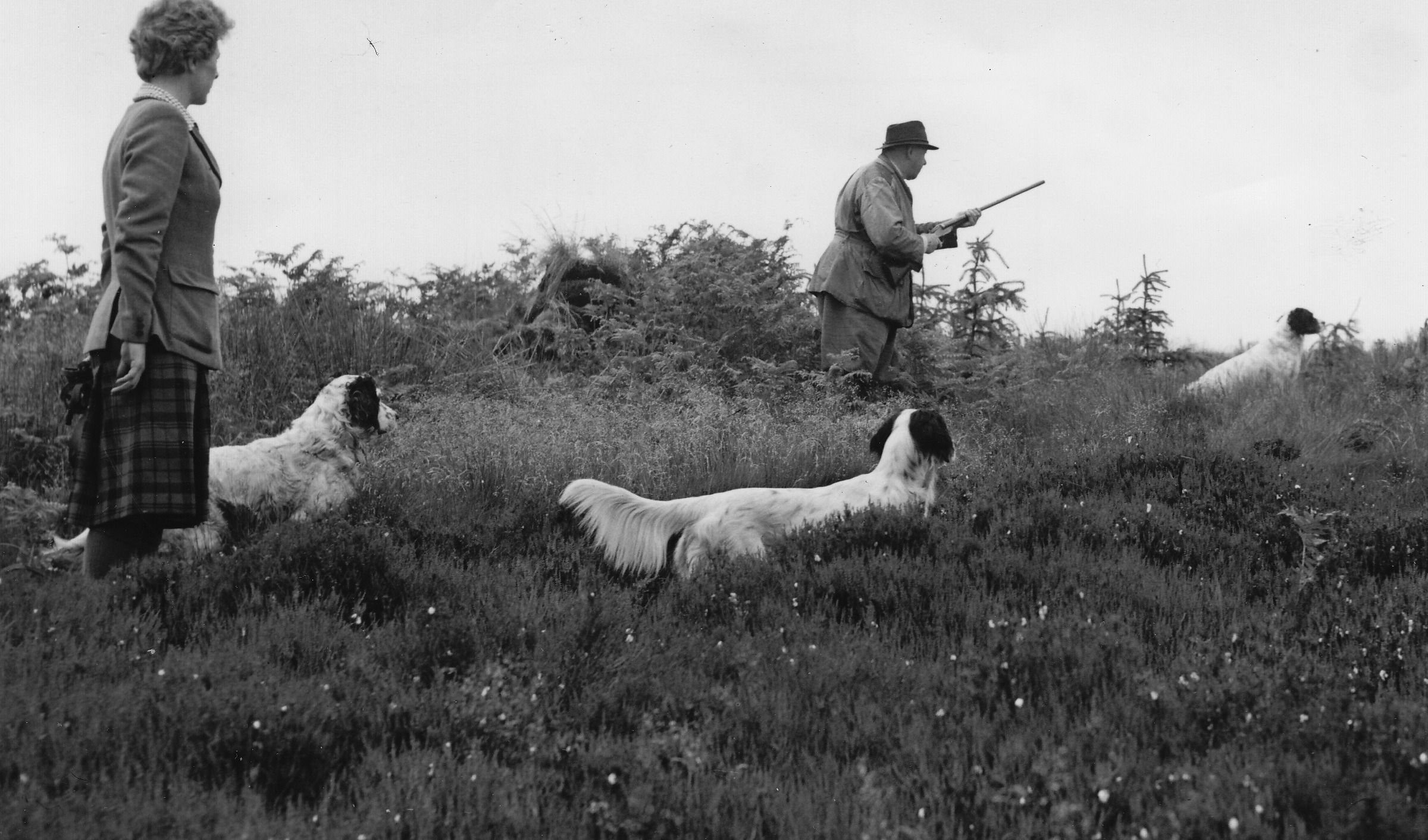
Eppie Buist
Lady Jean Fforde
